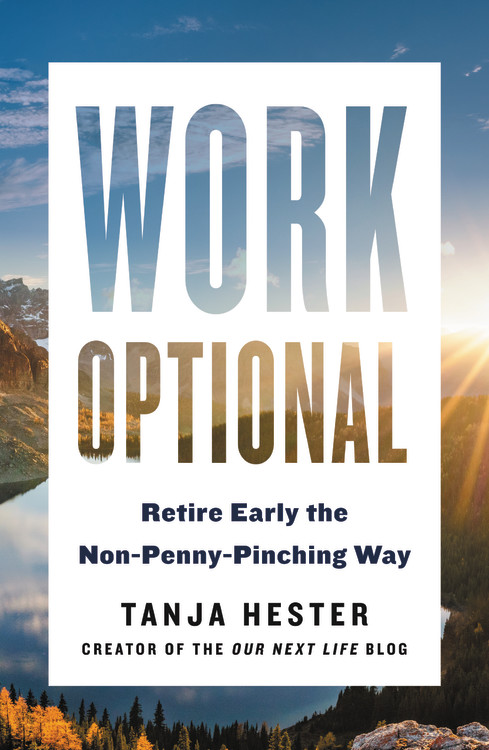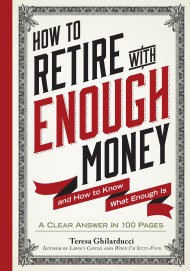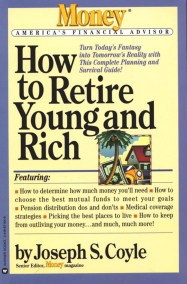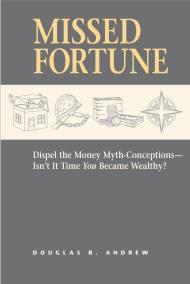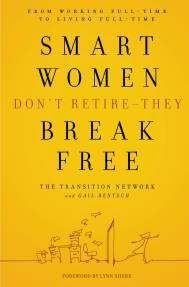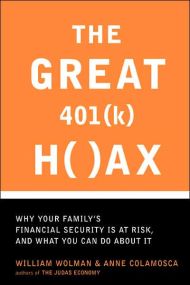Promotion
Use code MOM24 for 20% off site wide + free shipping over $45
Work Optional
Retire Early the Non-Penny-Pinching Way
Contributors
By Tanja Hester
Formats and Prices
Price
$17.99Price
$22.99 CADFormat
Format:
- Trade Paperback $17.99 $22.99 CAD
- ebook $9.99 $12.99 CAD
- Audiobook Download (Unabridged)
This item is a preorder. Your payment method will be charged immediately, and the product is expected to ship on or around February 12, 2019. This date is subject to change due to shipping delays beyond our control.
Also available from:
A practical action guide for financial independence and early retirement from the popular Our Next Life blogger.
Tanja Hester and her husband Mark left their crazed careerist lifestyle to live their dream life in Lake Tahoe, retiring early from high-stress careers. Now Tanja will help you map out a customized plan for freedom and make it easy to succeed, whether you’re good at math and budgeting — or not!
Work Optional is more than just a financial plan: it’s a plan for your whole life — designed by you, not by an employer or clients. Tanja walks you through envisioning your dream life, accounting for variables such as health care and children, protecting yourself from recessions and future unknowns, and achieving a purpose-filled early retirement, semi-retirement, or career intermission with completely doable, non-penny-pinching steps.
You can live a happier, more meaningful life, free from the daily grind. Regardless of where you are in your career, Work Optional will get you there.
You can live a happier, more meaningful life, free from the daily grind. Regardless of where you are in your career, Work Optional will get you there.
Genre:
-
Forbes, "Best Early Retirement Blogs to Read!"
MarketWatch, "Best Books for FIRE!"
Forbes, "Money and Productivity Books You Should Absolutely Read This Summer!"
SavingAdvice.com, "Best Money Books By Finance Podcasters" -
"Tanja Hester and her partner... achieved early financial independence, and in these pages she takes you on her journey. Learn why so many are firing their bosses and searching for meaning and purpose beyond cubicles and 24/7 jobs."Vicki Robin, New York Times bestselling coauthor of Your Money or Your Life
-
"This isn't just a book about how to retire early. It's a book that proves it's possible to be mindful with your spending, and create a life that aligns with your values and passions-and work can play whatever role you want it to."Cait Flanders, bestselling author of The Year of Less
-
"Hester's story is relatable, refreshing, and a pleasure to read. All too often we chase external measures of success without thinking about what we truly want from life. In Work Optional, Hester gives us a roadmap for a less traveled path: living a more purpose-driven life through financial independence."Kristin Wong, author of Get Money: Live the Life You Want, Not Just the Life You Can Afford
-
"Inspirational, grounded, and thought-provoking, Work Optional cracks open preconceived ideas of what it means to work and what it means to live a fulfilling, purpose-driven life. Go on this adventure to learn not only the practical steps of early retirement, but more importantly, to discern what you truly want out of life. With Hester as your guide... you just might find yourself living a life you never imagined possible."Elizabeth Willard Thames, author of Meet the Frugalwoods: Achieving Financial Independence Through Simple Living
-
"Ms. Hester get[s] you to think about how you might retire early, forc[ing] you to ponder how you could cut current spending and increase your income, savings and the rates they earn."The New York Times
-
"Hester is equal parts analytical and encouraging in Work Optional, which helps the reader tear down any misconceptions about what it means to create a life on your terms. This will undoubtedly be a defining handbook for those looking to diverge from society's expectations of a traditional career path."Erin Lowry, author of Broke Millennial Takes on Investing
-
"Tanja Hester turns [the dream of early retirement] into a reality, by guiding you to map out your own plan for living the good life earlier than you might have originally expected."Bustle
-
"Work Optional outlines a realistic yet awe-inspiring path to a life where work is optional. There are plenty of books out there about how to save money and build wealth but if you want to weave financial excellence into a life full of adventure, contribution, and meaning - this is the book for you."Chad Carson, author of Retire Early with Real Estate
-
"Financial independence and early retirement are truly the ultimate life hacks, and in the page-turning book Work Optional, Tanja Hester lays out a concrete path to both define your future and help you get there. This newfound freedom gives you the space to focus on what you want out of life: your projects, passions, community and ultimately your happiness."Brad Barrett, co-host of the ChooseFI podcast
-
"Financially independent with a bulletproof plan, Tanja gets to the heart of what actually matters in moving forward on your financial journey in Work Optional without resorting to the extremes.... This well-researched book gives you a definitive action plan for creating a life-changing financial position in a two-phased retirement plan that is both realistic and motivating. Tips and tactics abound... in particular... her discussion about healthcare options for those seeking early retirement - a huge area overlooked by many many seeking to make work optional or pursue non-traditional work."Scott Trench, author of Set for Life: Dominate Life, Money, and the American Dream
-
"Takes a practical approach to this pie-in-the-sky goal [of early retirement], however much one might earn. She outlines procedures for saving for a full early retirement but also for partial retirement or just a career sabbatical for those with fewer financial resources. She walks the reader through every aspect of this planning, from figuring out your true annual budget to where to invest for the greatest likelihood of steady passive income later on."New York Post
-
"A detailed how-to manual for reorganizing one's life in such a way that leaving the workforce earlier than the traditional age of 65 is entirely manageable....Work Optional will leave you feeling empowered. Hester has left no stone unturned in making your financial plan as bulletproof as possible. It's highly readable and inspiring, too."Treehugger.com
- On Sale
- Feb 12, 2019
- Page Count
- 288 pages
- Publisher
- Hachette Books
- ISBN-13
- 9780316450898
Newsletter Signup
By clicking ‘Sign Up,’ I acknowledge that I have read and agree to Hachette Book Group’s Privacy Policy and Terms of Use

